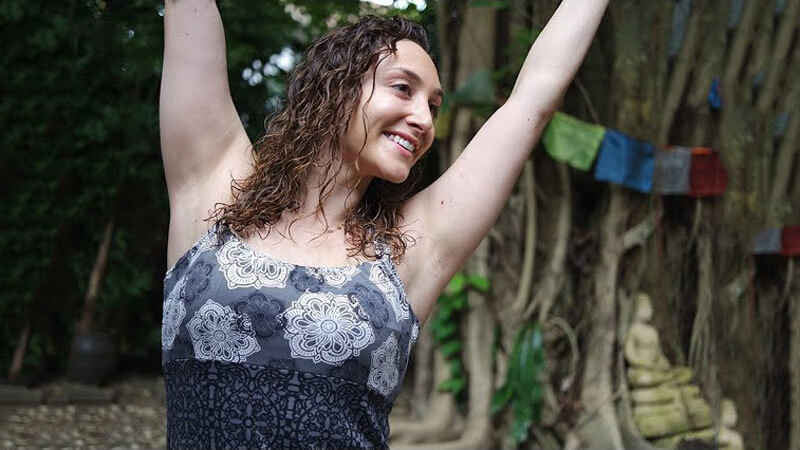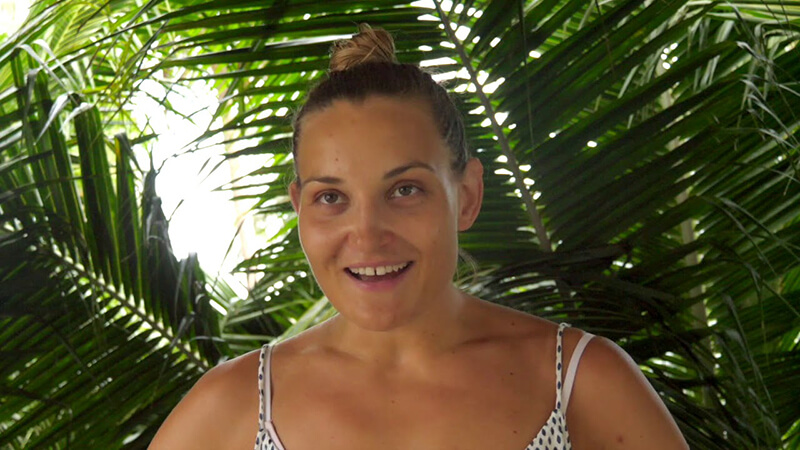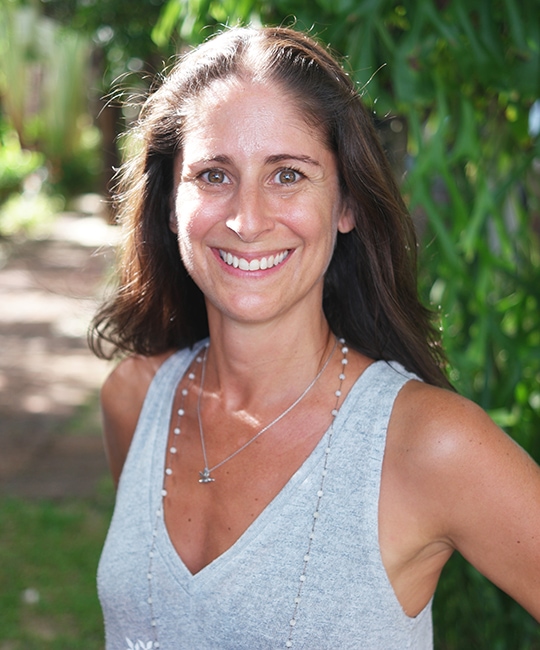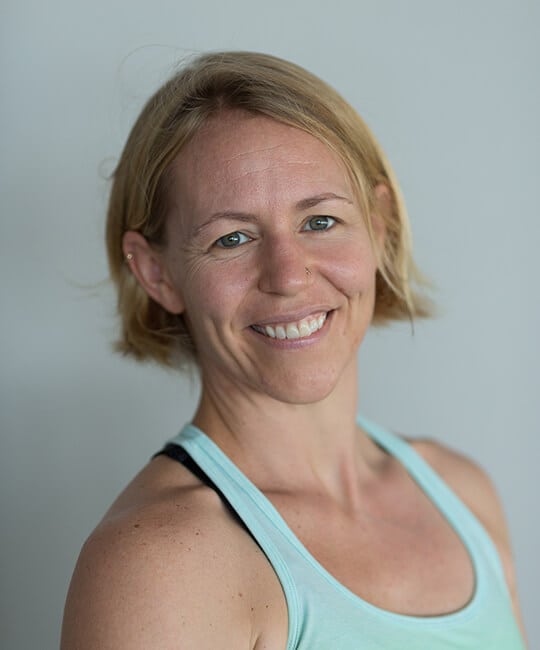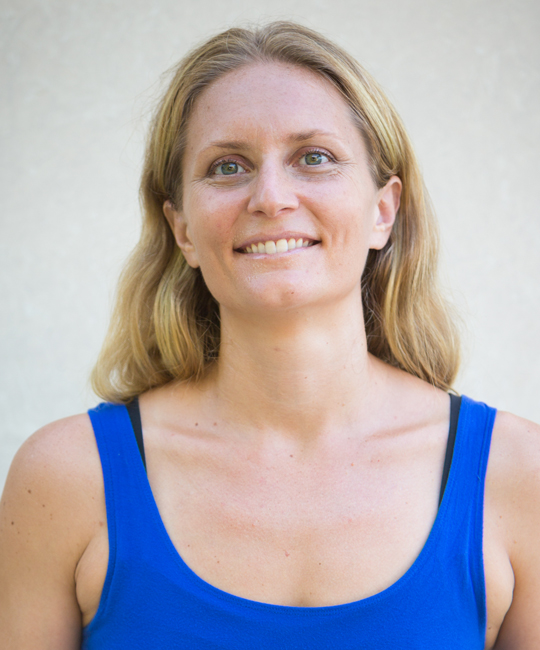Since 1999, Centered Yoga’s 200-hour Education in Yoga offers the depth of practice and tradition with modern understanding and scientific knowledge.
It stands out as the only clear, science-based PLUS tradition-grounded authentic training on the market:
Our team has 75+ years in yoga practices and philosophy, health, meditation, science, fitness and body mechanics.
We deliver scientifically designed and researched protocols in asana, breath and meditative practice methods.
Program developed since 1999 by Paul Dallaghan, PhD, annually updating the course, and dedicated for the past 30 years to yoga practice, study and research.
Led by Gillian Breetzke, Daniel Stringer, Arielle Nash & Elonne Stockton:
- Advanced and skilled teachers of āsana, pranayama and meditative techniques
- Expertise in body mechanics, somatics, and fascia of the body
- Highly experienced in how to teach breath practice and pranayama
- Advanced level of āsana practice and teaching
- Masters level knowledge in yoga philosophy and Buddhist studies
- Combined experience of over 45 years in both yoga teaching and leading YTT’s
- Whole-heartedly dedicated to the practice and teaching of yoga
- Committed to sharing insights with students and empowering their practice to underpin the rest of their lives
- Able to relate yoga practice to the real world
Accreditation





200 Hour Course Dates
May 4 – June 1, 2024
ALL-INCLUSIVE RATES from as low as $4114
Led by Centered Yoga team: Gill, Daniel, Arielle, Elonne with Paul
November 9 – December 7, 2024
ALL-INCLUSIVE RATES from as low as $4114
Led by Centered Yoga team: Gill, Daniel, Arielle & Elonne
200 Hour Course Details
Centered Yoga’s Education in Yoga Foundation Level 200-hour Yoga Teacher Training Course delivers almost 300 hours of training that encompasses methods and teaching from classical Raja and Hatha Yoga, across modern vinyasa and asana, to traditional pranayama and meditation, with modern science and research to guide the way forward:
Engaged Dynamic Asana practice and teaching
Developed sequences to practice and learn that include dynamic elements of asana, several options of vinyasa, and core routines, combined based on traditional practice knowledge and scientific updates.
Restorative Asana practice and teaching
Various forms of gentle, yin, flow and restorative classes from both classical old style hatha yoga as well as modern restorative forms.
How to Breathe and Breath Regulation
Clear techniques and practices in regulating and training the breath, to be used in all practices as well as benefit daily life. Know and understand it well so it can be shared and taught to others.
Cleansing Kriyas
Traditional hatha yoga methods to take care of and rejuvenate internal organs, open the body, and improve the breath.
Classical Pranayama practice
Being one of the world’s leading authorities and knowledge bases in pranayama you will be taught in detail and, most importantly, correctly, in pranayama methods to further engage you in practice and the world of yoga and meditation.
Meditation Practice and Techniques
Daily practice and growth internally incorporating a few approaches across yogic and Buddhist traditions.
Yoga Philosophy and Psychology
The classic texts and teachings on yoga presented in terms of our lives today, with most attention on Patanjali Yoga Sutra, and reference to the Gita, Sankhya Karika, and Hatha Pradipika
Anatomy and Physiology
Up to date science and research on the body and its systems and movement forms within the yoga practice.
Chanting and Mantra
Be introduced to this ancient practice of mantra and Pranava (Om) recitation along with the enhanced learning of key Sanskrit terms and names through chanting.
How to Teach
Clear guidelines and instructions on how to teach to different levels of students a few different approaches to asana class as well as breathwork.
Yoga in Daily Life
Instruction for the practical application of these tools in going about teaching in the modern world and keeping it in life.
Full Residential Experience
Eat, live and breathe in one of the world’s most dedicated yoga practice settings, designed for the yoga approach and to aid your own practice and growth.
Strength and Fitness
Functional fitness core strength work coupled with indoor cycling cardio workouts on the world’s best Schwinn bikes serve to complement and augment your training as part of our YogaCoreCycle programming.
Teacher Training Curriculum
Explore all elements by clicking on them below
Primary Elements
Minor Elements
Let's Start with Asana
Asana is a typical starting point in yoga, and what you will primarily teach. As your awareness and understanding deepen in other areas, your asana and how you teach it will develop. The poses have the capacity to open up energy channels, build strength and flexibility, rearrange the nervous system, and detoxify the body’s inner organs.
The course covers traditional Hatha yoga asanas found in classical texts and expanded upon in modern times. Alignment, breath, inner focus, benefits, common mistakes, and variations are covered for each pose. You will learn from doing the pose and adjusting students in it, both in group and in private instruction.
The course will alternate between exploring detailed alignment, dynamic vinyasa and gentle restorative approaches. The asana teaching will also emphasize and encourage the exploration and growth of your individual practice, as we often will break into guided small groups and offer support for you to work into your edges and your own sticking points.
All types of asana are covered: standing, balancing, forward bends, backward bends, twists, and inversions. Sun salutations are a major component of the practice, and both the vinyasa (jump back) and twelve-point approaches will be studied.
Upon Completion You Will Have
Upon successful completion of this training course you will be equipped with:
- The ability to teach a dynamic, vinyasa style asana class
- The ability to teach a gentle, restorative style asana class
- Basic understanding and direction to sequence your own classes
- Your own personalized asana practice
- Your own personalized seated practice (based in breathing awareness, classical pranayama, and mantra meditation techniques)
- A greater context for, and understanding of, Yoga in its entirety, beyond the physical approach to asana, so caring & sharing and love of this planet can be interpreted to others.

Get Started Now
Complete the application form. Its questions are designed to help you think more about doing a training and studying here. We review them within 48 hours and inform you of a space or not.
Yoga Teacher Apprentice Program
If you aspire to teach yoga and want to further your education and get more hands-on experience then you be eligible for one of the few spots to apprentice that follow a 200-hour Education in Yoga teacher training program
Daily Schedule
The full schedule will be presented to you at the Meet and Greet on your first day of training. The outline of the schedule
is that there are classes throughout the day, starting at 7am and ending at 6.30pm with breaks in-between.
On some evenings there will be meditation classes. Saturdays are generally rest days or time for study. There is an optional boat trip and other outings around Samui are possible for those interested in seeing more of the island.
We look forward to welcoming you to go deeper into practice at our beach front center designed specifically for yoga and wellness.
All-Inclusive Rates – Full Training, Guest Rooms & Food
Rates are in US Dollars, are per person, and are fully inclusive of room, buffets, practices, and the full 4 weeks of training across the duration of the program dates
Early Bird Prime rates expire exactly 108 days before the course start date
Early Bird rates expire exactly 60 days before the course start date
Payment must be received in full by the early bird expiry date to qualify, or it automatically defaults to the next fee level. Due to the nature of these offers we must strictly adhere to these dates so that all applicants are treated equally. If your application with payment arrives after the promoted date, we are unable to change the offer.
Please take clear note on the expiry dates below.
| Regular | Early Bird | Early Bird Prime | ||
| NEW “Inhale” Beachfront Rooms (available for trainings in 2024) |
Beachfront Private | $8,354 | $7,914 | $7,474 |
| Beachview Private | $7,514 | $7,074 | $6,634 | |
| Beach Private | $6,674 | $6,234 | $5,794 | |
| “Exhale” Gardenview Rooms (available for trainings in 2024) |
Garden Private | $5,834 | $5,394 | $4,954 |
| Garden Semi-Private | $5,414 | $4,974 | $4,534 | |
| Garden Shared Loft | $4,994 | $4,554 | $4,114 | |
Early Bird Expiry Dates
| 200 Hour Dates | Early Bird expires | Early Bird Prime expires |
| May 4 – June 1, 2024
Songkran, Thai New Year special! |
March 5, 2024
extended until April 20, 2024! |
January 17, 2024 |
| November 9 – December 7, 2024 | September 10, 2024 | July 24, 2024 |
Want to extend your stay?
Want to extend your stay?
Post-training special offer: extend your stay after your training and receive 25% off the extra nights.
- Offer valid to a max of 8 nights
- Extra nights may be booked on YogaCoreCycle or a Wellness program
- Subject to room availability
- No refunds, changes, or transfers
Confirm your rate and book all extended stays directly with reservations info@samahitaretreat.com
Training Instructors
Gill Breetzke
Senior Teacher
Daniel Stringer
Senior Teacher
Arielle Nash
Lead Anatomy Teacher
Elonne Stockton
Yoga Philosophy Teacher
Paul Dallaghan
Centered Yoga Founder and Director
Testimonials
Apply Now
Complete the application form. Its questions are designed to help you think more about doing a training and studying here. We review them within 48 hours and inform you of a space or not.
Enjoy Our All Inclusive Facilities
Facilities
Samahita RetreatFood
Samahita RetreatGuest Rooms
Samahita RetreatStay Longer
Samahita RetreatThe Heart of Samahita is found in its impressive mix of facilities that provide the space for your experience, as well as through the food where tasty and healthy merge powerfully, and in our quality mix of guest rooms, where you can stay in the highest of standards right at the beach or find rooms to suit all budgets from beach to garden. And when here you can also paddle board, kayak and snorkel, amongst other activities. Feel free to take a tour and find out where Samahita is located.

